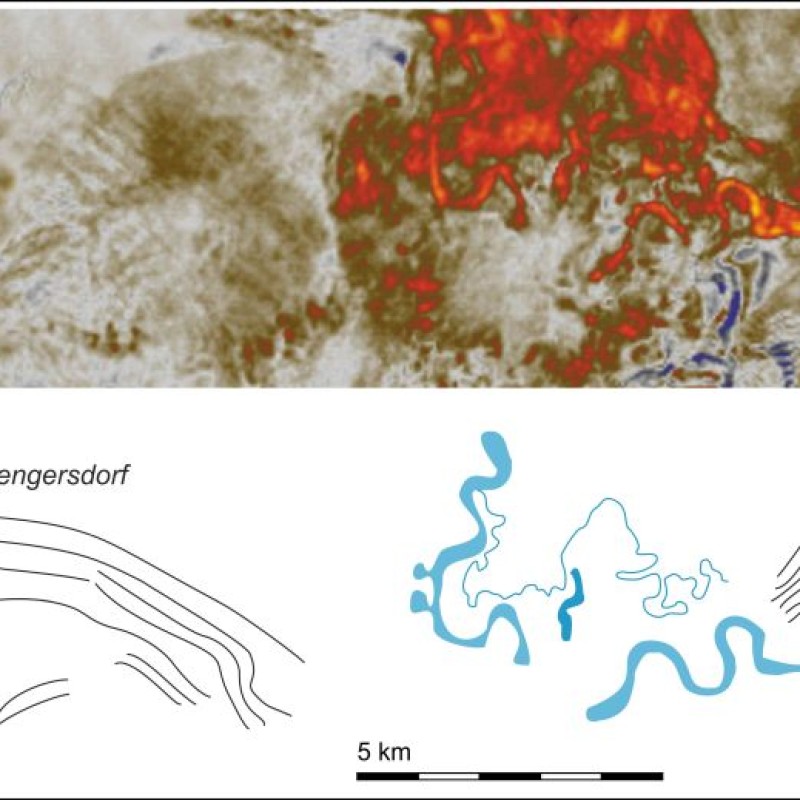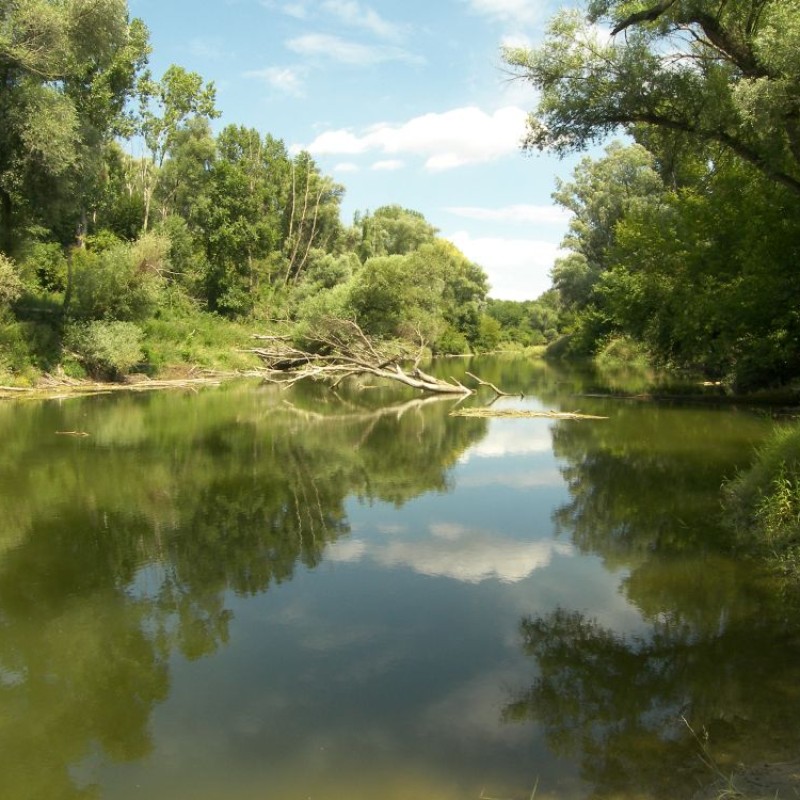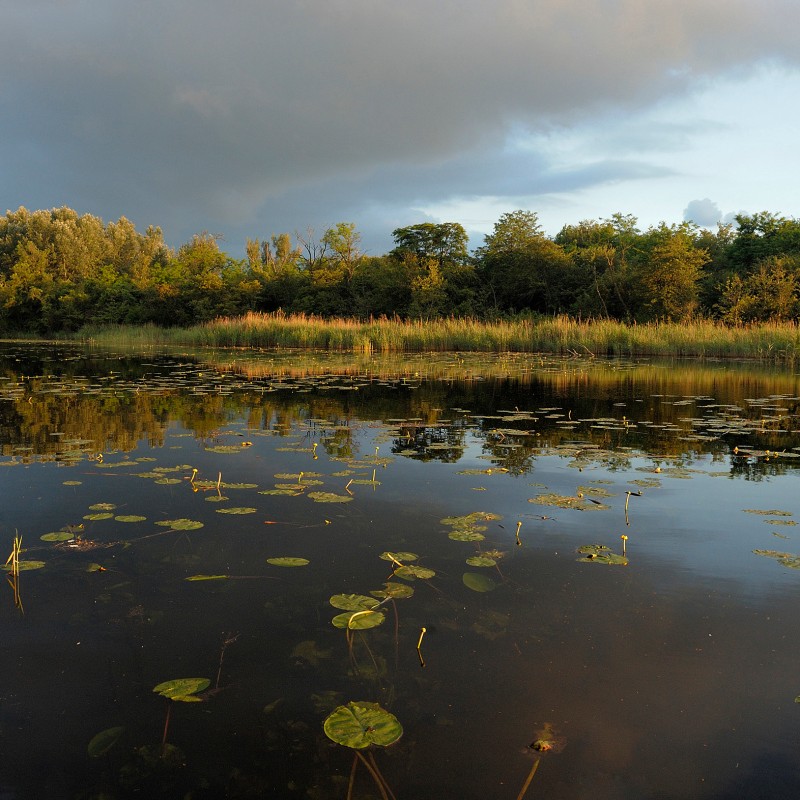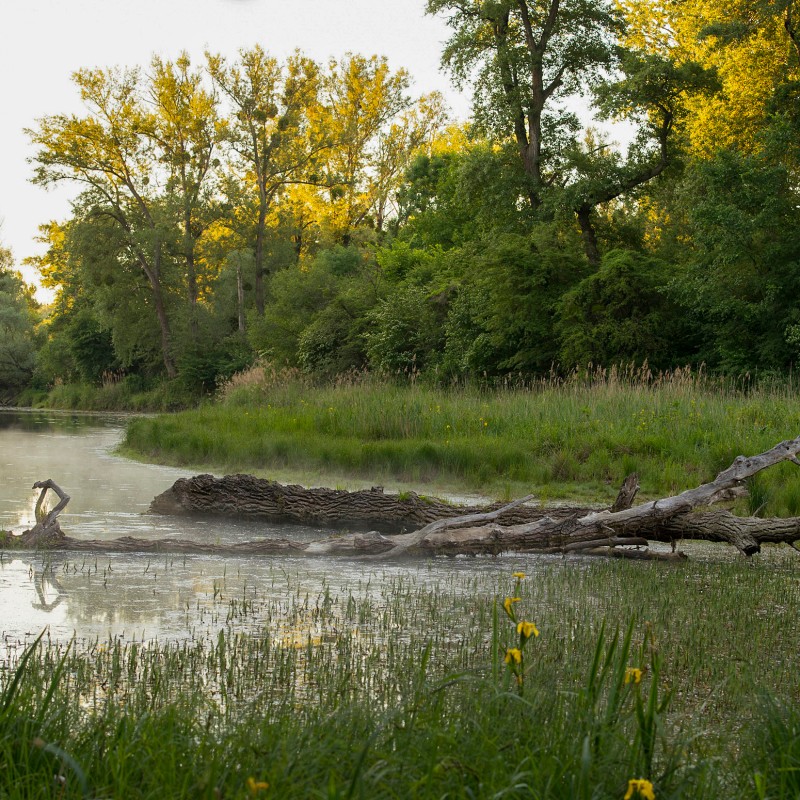New research findings: Paleo-Danube delta discovered north of Vienna
15. February 2022
11.5 million years ago, the Paleo-Danube first flowed eastwards through the Alpine foothills. In the gravel pits found along
the way from Krems to Hollabrunn and Mistelbach (Lower Austria), the most commonly found fossils are bones of enormous elephants
and hornless rhinos or the teeth of three-toed horses. The fluvial deposits are remnants of the floodplain of the Paleo-Danube,
and researchers have now found out where exactly the delta of this Miocene precursor of the Danube was located.
Together
with colleagues from OMV and the University of Graz, researchers from the Natural History Museum (NHM) Vienna have now discovered
this delta north of Vienna – albeit at a depth of more than 600 metres. State-of-the-art 3D seismic technology provided by
OMV enables the researchers to embark on a virtual journey into the late Miocene, when the delta of the Paleo-Danube extended
from Mistelbach to Zistersdorf and Aderklaa (Lower Austria) and on to the southern city limits of Vienna. At that time, the
Paleo-Danube flowed into the huge Lake Pannon, which covered large parts of eastern Austria, Hungary, Croatia and Romania.
The researchers were able to precisely map the former delta bodies and thus decipher the evolution of the delta. Approximately
every 40,000 years, the Paleo-Danube shifted its estuary arms and slowly advanced its delta to Großengersdorf, Aderklaa, Markgrafneusiedl,
Matzen and Zistersdorf. Due to the gradual subsidence of the subsoil in the Vienna Basin, the gravels and sands of the Paleo-Donau
sank lower and lower and were buried under younger sediments. This process preserved the meanders of individual river courses
at a depth of hundreds of metres and extensive dune fields were left on the delta areas. Covering a surface of 850 km², the
Paleo-Danube delta was about six times smaller than that of today's Danube, which tallies well with its significantly shorter
course. The hot and dry climate facilitated the extension of the delta far into the Vienna Basin. Lake Pannon had an extremely
low water level. While the many river arms and delta lakes were lined with dense alluvial forests populated by water caltrop,
bald cypress trees and Liquidambar, the hinterland featured open landscapes.
The researchers were also able to determine when this Paleo-Danube delta came to an end. After only 200,000 years – a mere blink in geological terms – the water level of Lake Pannon rose by several tens of metres and pushed the delta far back into the Alpine foothills. The delta and its alluvial landscapes were rapidly flooded. The phenomenon that was to blame for this catastrophe was, unsurprisingly, climate change that brought increased rainfall in its wake.
The results of this study were published in the renowned journal Global and Planetary Change:
Borzi, A., Harzhauser, M., Piller, W.E., Strauss, P., Siedl, W., Dellmour, R. 2022. Late Miocene Evolution of the Paleo-Danube Delta (Vienna Basin, Austria). Global and Planetary Change, 103769. https://doi.org/10.1016/j.gloplacha.2022.103769
The researchers were also able to determine when this Paleo-Danube delta came to an end. After only 200,000 years – a mere blink in geological terms – the water level of Lake Pannon rose by several tens of metres and pushed the delta far back into the Alpine foothills. The delta and its alluvial landscapes were rapidly flooded. The phenomenon that was to blame for this catastrophe was, unsurprisingly, climate change that brought increased rainfall in its wake.
The results of this study were published in the renowned journal Global and Planetary Change:
Borzi, A., Harzhauser, M., Piller, W.E., Strauss, P., Siedl, W., Dellmour, R. 2022. Late Miocene Evolution of the Paleo-Danube Delta (Vienna Basin, Austria). Global and Planetary Change, 103769. https://doi.org/10.1016/j.gloplacha.2022.103769







